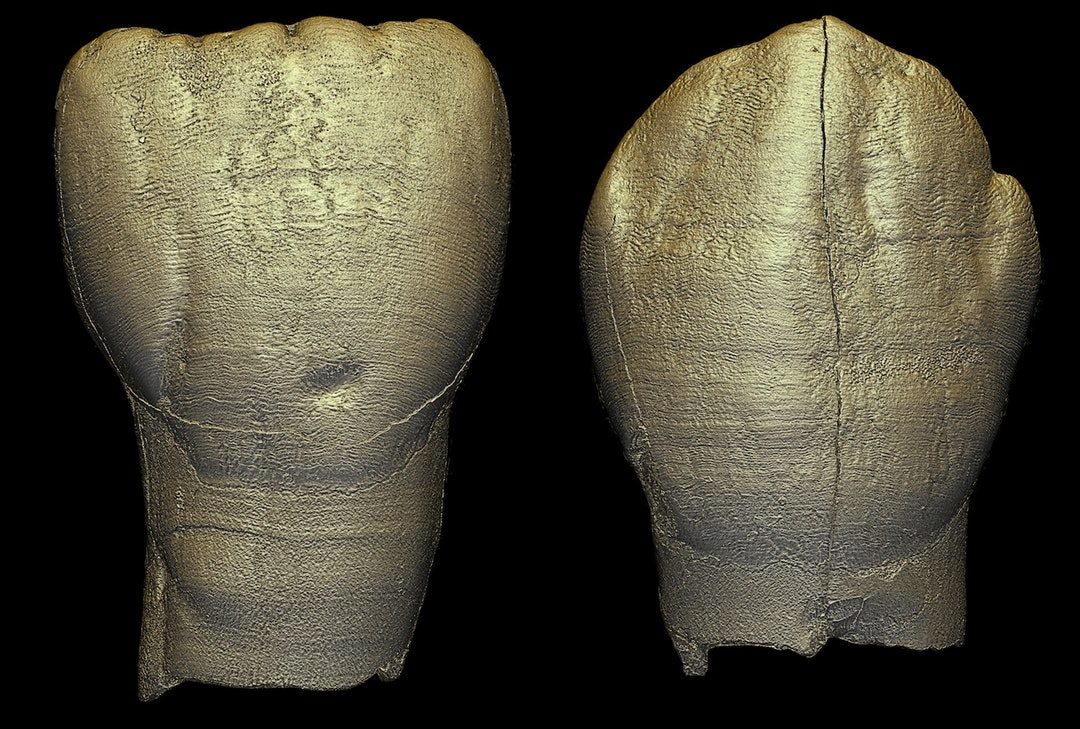
In the latest analysis, published in the journal Science Advances, the jawbone and teeth of a child reveal that, like us, these ancient people were slow to mature.
But who these people were remains a mystery.
In recent years, the story of early human evolution has become increasingly complicated. Asia, in particular, is throwing up some head-scratching finds that call into question when different members of the Homo clan migrated out of Africa, and how many separate species existed in different parts of the globe.
The Xujiayao site in the Nihewan Basin of northern China was excavated in the late 1970s. In all, 20 ancient human fossils were found there, including skull fragments, jawbones and teeth from a number of individuals.
There have been two attempts to nail down when these prehistoric people lived. Dating of teeth from animal remains found alongside the hominin bones suggests they lived around 100,000 years ago.
But measurements of trapped electrons in the sediments that contain the fossils point to a more ancient time period.
"We believe it's the older age, at the end of the middle Pleistocene, around 160,000 [years ago]," says lead author Song Xing from the Institute of Vertebrate Palaeontology and Palaeoanthropology at the Chinese Academy of Sciences.
In terms of morphology, the fossils reveal a "mosaic" human relative, he explains.
"They have some primitive features connected with Homo erectus and some derived features that fall into the variation of modern human, and also some minor Neanderthal features, too."
Xing and his colleagues scanned a jawbone fragment, containing teeth, at the European Synchrotron Radiation Facility in France. The synchrotron scanning allows scientists to view the insides of a specimen without destroying it.
In the case of teeth, tiny lines that form as layers of enamel are deposited during growth can be examined without having to slice the tooth in half.
Teeth are unique time capsules that reveal important details about prehistoric life. They can be used to estimate the age of death of a fossil, and, according to biological anthropologist Tanya Smith from Griffith University in Australia, who was not involved in the study, they're one of the most faithful markers of the rate of overall growth.
Xing and his team estimate that the child died at about six-and-a-half years of age.
Modern humans are particularly slow to mature. Our childhood is long, and we reach adolescence later than our monkey or ape relatives. That can be seen in our teeth, which are also slower to emerge and grow.
The Xujiayao juvenile was similar. It matured at a rate similar to children of today.
With the new data, the possibilities of who the Xujiayao people were are narrowing.
"It's definitely not Neanderthal. It's not Homo erectus, and not modern human," says Xing.
"The story in Asia has been really interesting over the last few years," says Smith. "This [study] gives us more insight into the characteristics of one of these anomalous relatives."
One possibility is that the remains could be from Denisovans, the elusive group known from just a couple of teeth and bone shards and an incredibly complete genome sequence.
But we may never know. "DNA preservation is not quite good in China," says Xing.
Attempts to extract ancient DNA from another Chinese fossil - the Xuchang skull from central China - have been unsuccessful, he says.
Until recovery methods improve, the risk of destroying precious specimens outweighs the small chance of success, says Xing. "We have to wait," he cautions.
In the meantime, his colleagues are piecing together skull fragments from the site to build a model of what these people looked like.



Reader Comments
to our Newsletter